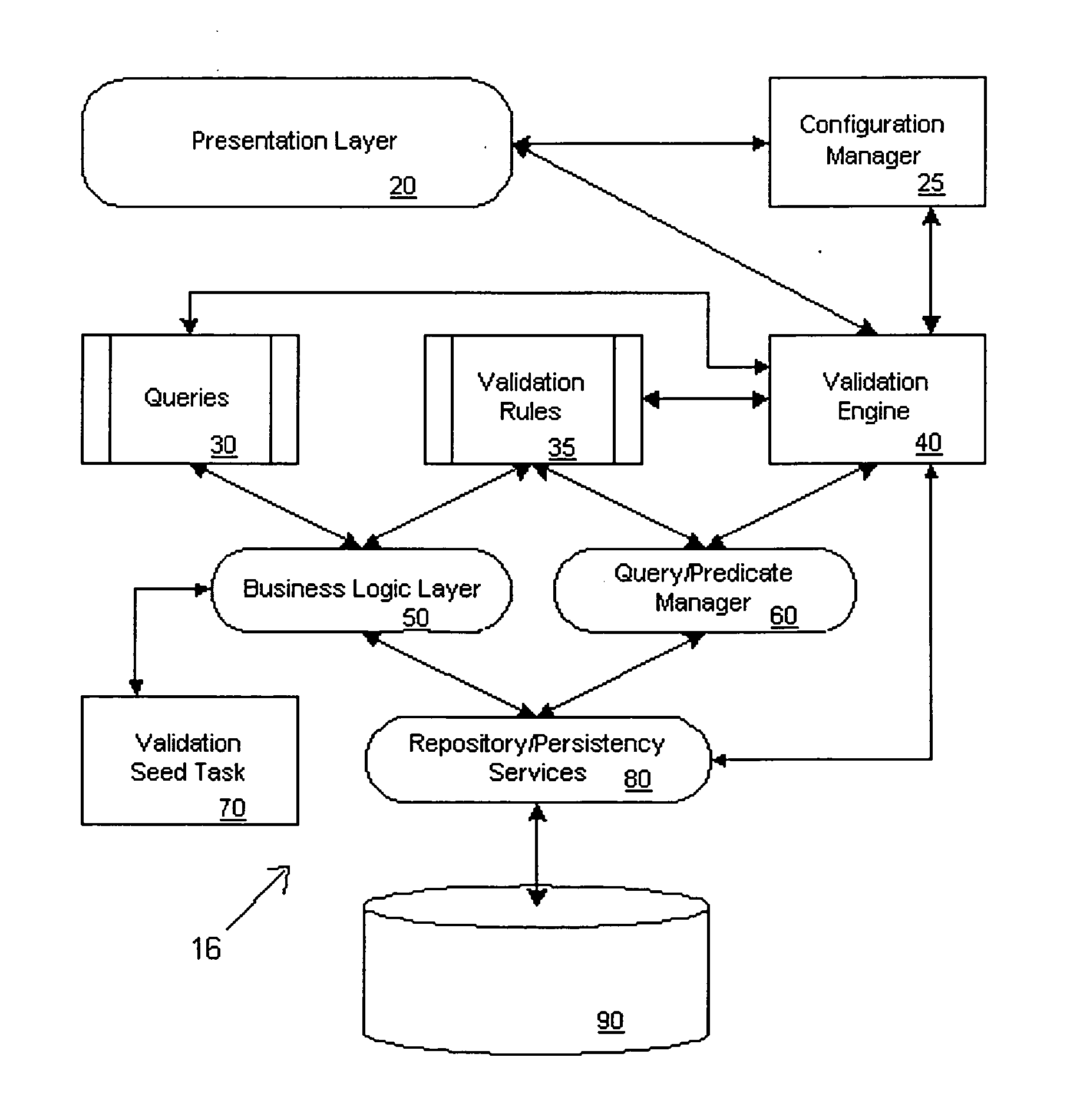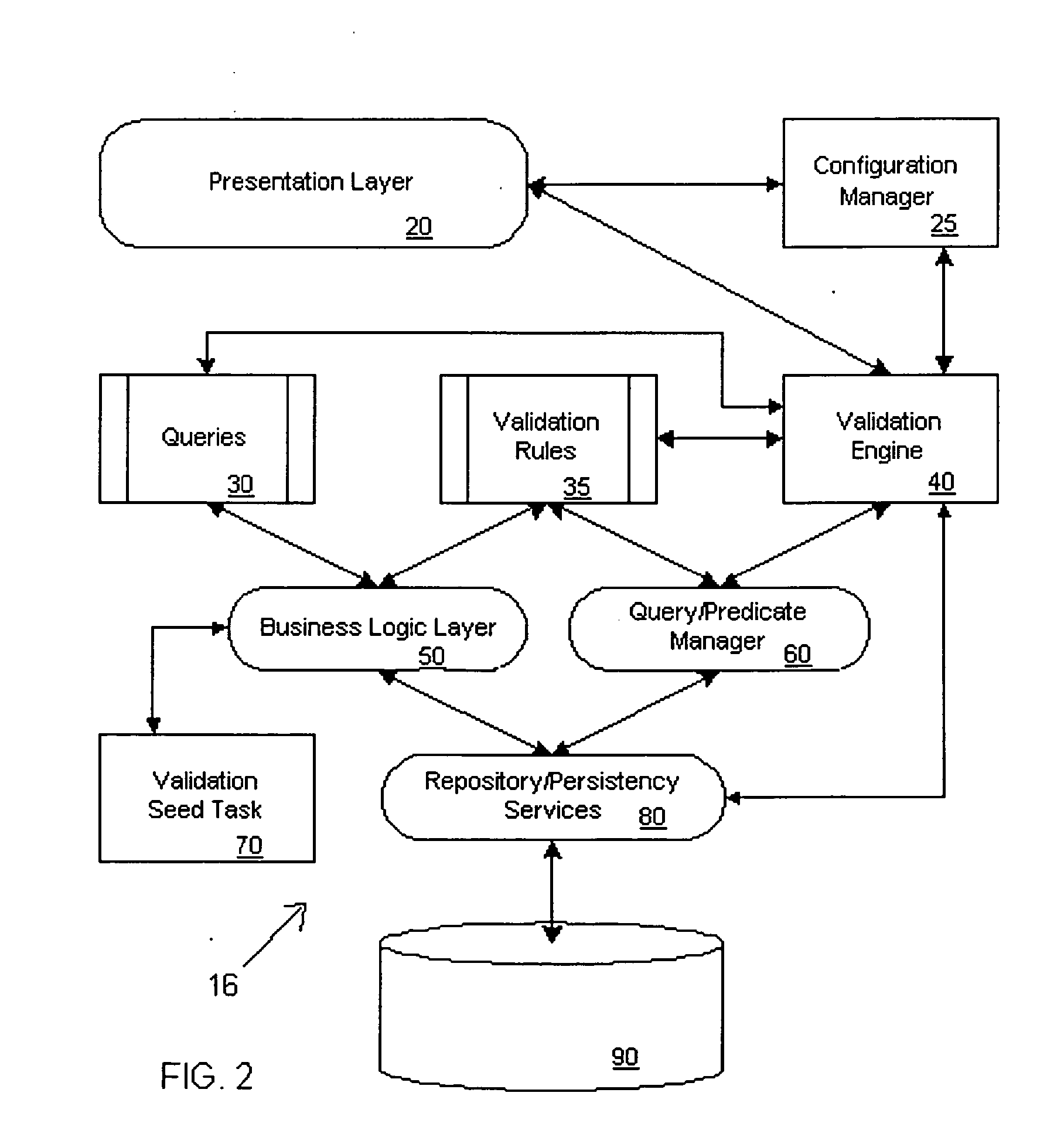Systems and methods for validating design meta-data
a meta-data and design technology, applied in the field of object-oriented programming and object models, can solve the problems of not being able to alter the behavior of such logic, not being able to create incorrect and incomplete data, and not being able to define complex validation rules and constraints that fully describe a consistent object model
- Summary
- Abstract
- Description
- Claims
- Application Information
AI Technical Summary
Benefits of technology
Problems solved by technology
Method used
Image
Examples
Embodiment Construction
[0019] According to the present invention, systems and methods are provided for implementing metadata validation. Metadata validation is the validation of metadata in a data repository, such as a database. A metadata validation framework provides a means for performing metadata validation on a given subject within a specified context.
[0020] General Definitions and Concepts
[0021] The subject of metadata validation is the meta metadata object on which a validation rule is defined. In general, the following terms are used herein to describe meta metadata objects: MetaClass, MetaCollection, MetaAttribute, MetaAssociation, MetaAssociationEnd. A MetaClass is an object used to represent a model class. A MetaCollection is a concept used to represent a collection of MetaClass objects. A MetaAttribute is an object used to represent a single attribute of a MetaClass object. A MetaAssociation is an object used to represent an association between two MetaClass objects. A MetaAssociationEnd is ...
PUM
 Login to View More
Login to View More Abstract
Description
Claims
Application Information
 Login to View More
Login to View More - R&D
- Intellectual Property
- Life Sciences
- Materials
- Tech Scout
- Unparalleled Data Quality
- Higher Quality Content
- 60% Fewer Hallucinations
Browse by: Latest US Patents, China's latest patents, Technical Efficacy Thesaurus, Application Domain, Technology Topic, Popular Technical Reports.
© 2025 PatSnap. All rights reserved.Legal|Privacy policy|Modern Slavery Act Transparency Statement|Sitemap|About US| Contact US: help@patsnap.com



